The 46th Observation Escadrille was a unit of the Polish Air Force at the beginning of the Second World War. The unit was attached to the Pomorze Army.
Contents

The 46th Observation Escadrille was a unit of the Polish Air Force at the beginning of the Second World War. The unit was attached to the Pomorze Army.

Commanding officer: kpt. pil. Roman Rypson.
7 Lublin R-XIIID and Lublin R-XIIIC airplanes and 2 RWD-8.
The LWS-6 Żubr was a Polish twin-engined medium bomber, produced by the LWS factory before World War II. A short series was used for training only, because it was inferior to the contemporary PZL.37 Łoś design.
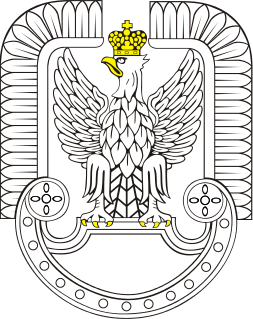
The Polish Air Force is the aerial warfare military branch of the Polish Armed Forces. Until July 2004 it was officially known as Wojska Lotnicze i Obrony Powietrznej. In 2014 it consisted of roughly 16,425 military personnel and about 475 aircraft, distributed among ten bases throughout Poland.

The Lublin R-XIII was the Polish army cooperation plane, designed in the early-1930s in the Plage i Laśkiewicz factory in Lublin. It was the main army cooperation plane in the Invasion of Poland. Its variant Lublin R-XIV was a military trainer aircraft.
Plage i Laśkiewicz was the first Polish aerospace manufacturer, located in Lublin and manufacturing aircraft under Lublin name. Full name was: Zakłady Mechaniczne E. Plage i T. Laśkiewicz – Mechanical Works E. Plage & T. Laśkiewicz. The factory produced aircraft between 1920 and 1935, when it was nationalized as the LWS.

The RWD-14 Czapla was a Polish army cooperation aircraft, designed in the mid-1930s by the RWD team, and produced in the LWS factory from 1938. A series of 65 aircraft were built and most were used by the Polish Air Force observation squadrons during World War II in 1939.
LWS - Lubelska Wytwórnia Samolotów was the Polish aerospace manufacturer, located in Lublin, created in 1936 of Plage i Laśkiewicz works and producing aircraft between 1936 and 1939.
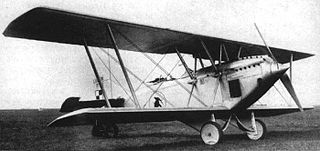
The Lublin R-VIII was a Polish bomber, reconnaissance aircraft and seaplane designed in the late 1920s by the Plage i Laśkiewicz factory in Lublin. It was the first in-house design of Plage i Laśkiewicz, and the first with the name Lublin.
The following is the order of battle of the Polish Air Force prior to the outbreak of the Polish Defensive War of 1939. During the mobilization waves of March and August of that year, all peace-time units were deployed to airfields throughout the country and attached to respective commands of Air Force, Naval Air Service and squadrons supporting each of the Polish armies. In the last stages of the air campaign, whole units coordinated all actions in the fight against the invaders.

The 111th Fighter Escadrille of the Polish Air Force was one of the fighter units of the Polish Army. Created in 1921, immediately after the end of the Polish-Soviet War, the unit inherited the traditions of the famous war-time Polish 7th Air Escadrille, in which both Polish and American volunteers served.

The Lublin R-X was a Polish single-engined, two seat liaison aircraft, built in 1929 in the Plage i Laśkiewicz factory in Lublin. Seven were completed, two of them prototypes. Four served with Polish air regiments and another made several notable long flights and tours.
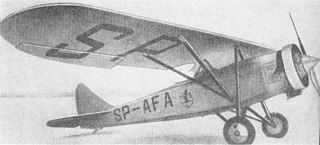
The PZL Ł.2 was the Polish Army cooperation and liaison aircraft, built in 1929 in the Polskie Zakłady Lotnicze (PZL) in Warsaw. Only a small series of 31 aircraft, including prototype, were made, and used by the Polish Air Force in the 1930s. The aircraft was known in Poland for accomplishing of a long-distance tour around Africa in 1931.

No. 112 Squadron was a squadron of the Royal Air Force. It served in both the First World War and Second World War and was active for three periods during the Cold War. It is nicknamed "The Shark Squadron", an allusion to the fact that it was the first unit from any Allied air force to use the famous "shark mouth" logo on Curtiss P-40s.

The 26th Observation Escadrille was a unit of the Polish Air Force at the beginning of the Second World War. The unit was attached to the Kraków Army.

The 66th Observation Escadrille was a unit of the Polish Air Force at the beginning of the Second World War. The unit was attached to the Łódź Army.
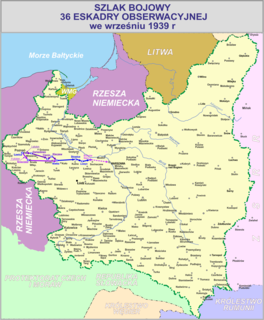
The 36th Observation Escadrille was a unit of the Polish Air Force at the beginning of the Second World War. The unit was attached to the Poznań Army.
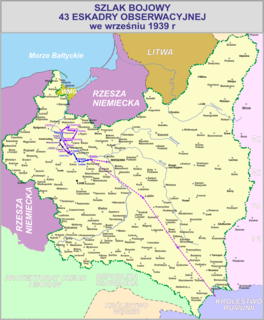
The 43rd Observation Escadrille was a unit of the Polish Air Force at the beginning of the Second World War. The unit was attached to the Pomorze Army.

The 56th Observation Escadrille was a unit of the Polish Air Force at the beginning of the Second World War. The unit was attached to the Karpaty Army.
The 16th Observation Escadrille was a unit of the Polish Air Force at the beginning of the Second World War. The unit was under direct command of the Polish HQ.
Short Range Reconnaissance Escadrille was a unit of the Polish Naval Air Squadron at the beginning of world war 2.
Long Range Reconnaissance Escadrille was a unit of the Naval Air Squadron at the beginning of world war 2.
| This Polish Air Force article is a stub. You can help Wikipedia by expanding it. |